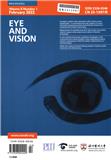
眼视光学杂志(英文版)(Eye and Vision) 知网目次万方目次维普目次
- CSCD
- 高T2
- 主管单位:
浙江省教育厅
- 主办单位:
温州医科大学
- 国际刊号:
2326-0246;EISSN2326-0254
- 国内刊号:
33-1387/R
- 学科分类:
- 字数:
18000-22000
- 有无基金:
/有基金 100.0%
- 周期:
CN外文-双月刊
- 特殊属性:
第二批认定学术期刊
- 电话:
0577-88053520(202006期)
- 邮箱:
editorial@eandv.org(202006期)
- 复合因子:
0
- 综合因子:
0
- 收录:
知网目次,万方目次,维普目次
- 级别:
CSCD,高T2
期刊简介
《眼视光学杂志》期刊已被查看: 次
更新频次
单位占比
一作占比
/有基金-100.0%投稿指南
1、投稿方式:在线投稿。
2、刊内网址:http://www.eandv.org
投稿系统:
http://www.editorialmanager.com/eavi
http://www.wmu.edu.cn/(温州医科大学)
3、相关网址:
http://www.wzeye.cn/about/282.html
(温州医科大学附属眼视光医院)
http://qk.wmu.edu.cn/
(温州大学期刊社)
3、刊内邮箱:editorial@eandv.org
4、刊内电话:0577-88053520
5、出刊日期:双月刊,逢双月出版。
6、刊内微信公众号:eyeandvision
2021年5月18日星期二
《眼视光学杂志(英文版)》杂志详情
主编:温州医科大学瞿佳教授
Eye and Vision是一本由温州医科大学主办,与全球领先的开放获取出版社BioMedCentral 合作出版全新国际英文期刊。本刊邀请了西班牙阿里特坎眼科研究所创办者,国际眼科科学院院士,西班牙Miguel Hernandez大学校长Jorge L. Alió教授,香港中文大学眼科及视觉科学系主任Chi-Pui Pang教授担任副主编,英国伦敦大学皇家学院眼科研究所主席John Marshall教授担任名誉顾问,与其他27位来自英、美、澳、德、加等国世界知名眼科专家组成强大的国际化编委团队。
期刊办刊宗旨为刊载国际眼科学、视光学及视觉科学领域的研究新进展、新成果、新技术,促进该领域的国内外学术交流,提高我国在该领域的学术研究水平和国际影响力,在为全球广大眼科医生、验光配镜师、科研人员及医学专业大专院校师生提供一个学术交流的新平台,推广世界眼视光学和视觉科学研究成果及进展。
期刊网络版创刊于2014年10月16日,同年期刊参加由中国科协、财政部、教育部、国家新闻出版广电总局、中国科学院和中国工程院组织实施的中国科技期刊国际影响力提升计划项目申报,获得该计划2014年新增D类项目(科协学函刊字[2014]169号),在提升期刊国际化道路迈出了关键的一步。2015年7月7日经国家新闻出版广电总局批准(新广出审[2015]753号),本刊正式获批国内统一连续出版物号CN33-1397/R,中文刊名《眼视光学杂志(英文版)》,双月刊,大16开,公开发行。2015年11月,期刊通过审核,正式被美国国家医学图书馆生物医学信息检索系统PubMed/PubMed Central全文收录。2015年12月,期刊被瑞典隆德大学图书馆创建的开放获取数据库DOAJ全文收录。
官方公众微信号:eyeandvision
了解本刊更多内容请登录官方网站http://www.eandv.org
联系方式:
地址:浙江省温州市学院西路270号温州医科大学附属眼视光医院Eye and Vision 编辑部 325000
电话:86-57788053520
传真:86-57788053519
Email:editorial@eandv.org
《眼视光学杂志(英文版)》投稿指南
【官网信息】
Aims and scope
Eye
and Vision is an open access, peer-reviewed journal for
ophthalmologists and visual science specialists. It welcomes research
articles, reviews, commentaries, case reports, perspectives and short
reports encompassing all aspects of eye and vision. Topics of interest
include but are not limited to: current developments of theoretical,
experimental and clinical investigations in ophthalmology, optometry and
vision science which focus on novel and high-impact findings on central
issues pertaining to biology, pathophysiology and etiology of eye
diseases as well as advances in diagnostic techniques, surgical
treatment, instrument updates, the latest drug findings, results of
clinical trials and research findings. It aims to provide
ophthalmologists and visual science specialists with the latest
developments in theoretical, experimental and clinical investigations in
eye and vision.
Fees and funding
Article-processing charges
The
publication costs for Eye and Vision are covered by the Affiliated Eye
Hospital of Wenzhou Medical University, so authors do not need to pay an
article-processing charge for each article accepted for publication.
Preparing your manuscript
This
section provides general style and formatting information only.
Formatting guidelines for specific article types can be found below.
Research
Review
Case Report
Letter to the Editor
Perspective
Short Report
Technical Advance
General formatting guidelines
Preparing main manuscript text
Preparing illustrations and figures
Preparing tables
Preparing additional files
Preparing figures
When preparing figures, please follow the formatting instructions below.
Figures
should be numbered in the order they are first mentioned in the text,
and uploaded in this order. Multi-panel figures (those with parts a, b,
c, d etc.) should be submitted as a single composite file that contains
all parts of the figure.
Figures should be uploaded in the correct orientation.
Figure titles (max 15 words) and legends (max 300 words) should be provided in the main manuscript, not in the graphic file.
Figure keys should be incorporated into the graphic, not into the legend of the figure.
Each
figure should be closely cropped to minimize the amount of white space
surrounding the illustration. Cropping figures improves accuracy when
placing the figure in combination with other elements when the accepted
manuscript is prepared for publication on our site. For more information
on individual figure file formats, see our detailed instructions.
Individual
figure files should not exceed 10 MB. If a suitable format is chosen,
this file size is adequate for extremely high quality figures.
Please
note that it is the responsibility of the author(s) to obtain
permission from the copyright holder to reproduce figures (or tables)
that have previously been published elsewhere. In order for all figures
to be open access, authors must have permission from the rights holder
if they wish to include images that have been published elsewhere in non
open access journals. Permission should be indicated in the figure
legend, and the original source included in the reference list.
Figure file types
We accept the following file formats for figures:
EPS (suitable for diagrams and/or images)
PDF (suitable for diagrams and/or images)
Microsoft Word (suitable for diagrams and/or images, figures must be a single page)
PowerPoint (suitable for diagrams and/or images, figures must be a single page)
TIFF (suitable for images)
JPEG (suitable for photographic images, less suitable for graphical images)
PNG (suitable for images)
BMP (suitable for images)
CDX (ChemDraw - suitable for molecular structures)
For information and suggestions of suitable file formats for specific figure types, please see our author academy.
Figure size and resolution
Figures
are resized during publication of the final full text and PDF versions
to conform to the BioMed Central standard dimensions, which are detailed
below.
Figures on the web:
width of 600 pixels (standard), 1200 pixels (high resolution).
Figures in the final PDF version:
width of 85 mm for half page width figure
width of 170 mm for full page width figure
maximum height of 225 mm for figure and legend
image resolution of approximately 300 dpi (dots per inch) at the final size
Figures
should be designed such that all information, including text, is
legible at these dimensions. All lines should be wider than 0.25 pt when
constrained to standard figure widths. All fonts must be embedded.
Figure file compression
Vector figures should if possible be submitted as PDF files, which are usually more compact than EPS files.
TIFF
files should be saved with LZW compression, which is lossless
(decreases file size without decreasing quality) in order to minimize
upload time.
JPEG files should be saved at maximum quality.
Conversion
of images between file types (especially lossy formats such as JPEG)
should be kept to a minimum to avoid degradation of quality.
If
you have any questions or are experiencing a problem with figures,
please contact the customer service team at info@biomedcentral.com.
更多详情:
https://eandv.biomedcentral.com/submission-guidelines
《眼视光学杂志》同类五官科学期刊
-
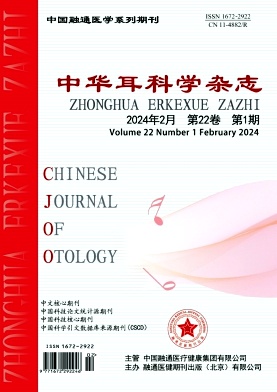
中华耳科学杂志(不收版面费审稿费)
北核,CSCD,科核,高T2,武B+
CN中文-双月刊影响因子1.422
-
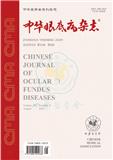
中华眼底病杂志
北核,科核,CSCD扩,高T3,武B+,CACJ-扩展
CN中文-月刊影响因子0.751
-
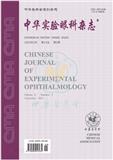
中华实验眼科杂志(原:眼科研究)
北核,CSCD,科核,武A-,高T3
CN中文-月刊影响因子1.072
-
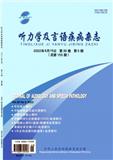
听力学及言语疾病杂志
北核,CSCD,科核,高T3,武B+
CN中文-双月刊影响因子1.056
-
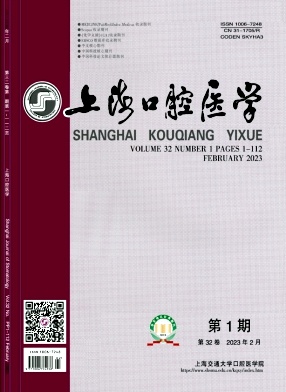
上海口腔医学
科核,武A-
CN中文-双月刊影响因子0.887
-
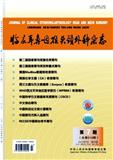
临床耳鼻咽喉头颈外科杂志(原:临床耳鼻咽喉科杂志)
北核,CSCD,科核,武A-,高T2
CN中文-月刊影响因子1.33
-
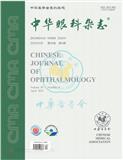
中华眼科杂志
北核,CSCD,科核,高T1,武B+
CN中文-月刊影响因子1.532
-
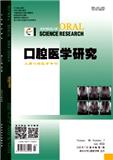
口腔医学研究
北核,科核,CSCD扩,武A-
CN中文-月刊影响因子0.998
常见问题
-
眼视光学杂志杂志社官网、联系方式是什么?
眼视光学杂志杂志社官网:http://www.eandv.org/
投稿网址:http://www.editorialmanager.com/eavi联系电话:0577-88053520(202006期)
投稿邮箱:editorial@eandv.org(202006期) -
眼视光学杂志杂志是核心期刊么?
眼视光学杂志是核心期刊,级别是:CSCD,高T2, 是:五官科学分类下的知网目次,万方目次,维普目次收录的期刊。
-
请问你们是眼视光学杂志杂志社吗?
我们不是《眼视光学杂志》杂志社。本站主要从事期刊信息展示与期刊推荐,不是任何杂志官网,直投稿件请联系杂志社。本站仅提供免费的学术指导、论文辅导、期刊投稿信息整理收集服务。
-
你们指导服务后可以保证文章被发表吗?
期刊发表的成功与否,主要取决于文章内容的质量。编辑老师会根据研究领域、创新性等多因素进行考量。我们会帮助您理解期刊的发表要求,助力提升发表几率,从而增加发表的机会。
-
晋级论文能否在报纸上发表?
在学术界,论文的发表往往被视为研究者职业发展的重要一环。晋级论文,即为了获得更高职称或学术地位而撰写的学术论文,通常需在专业期刊上发表。然而,许多人可能会问
